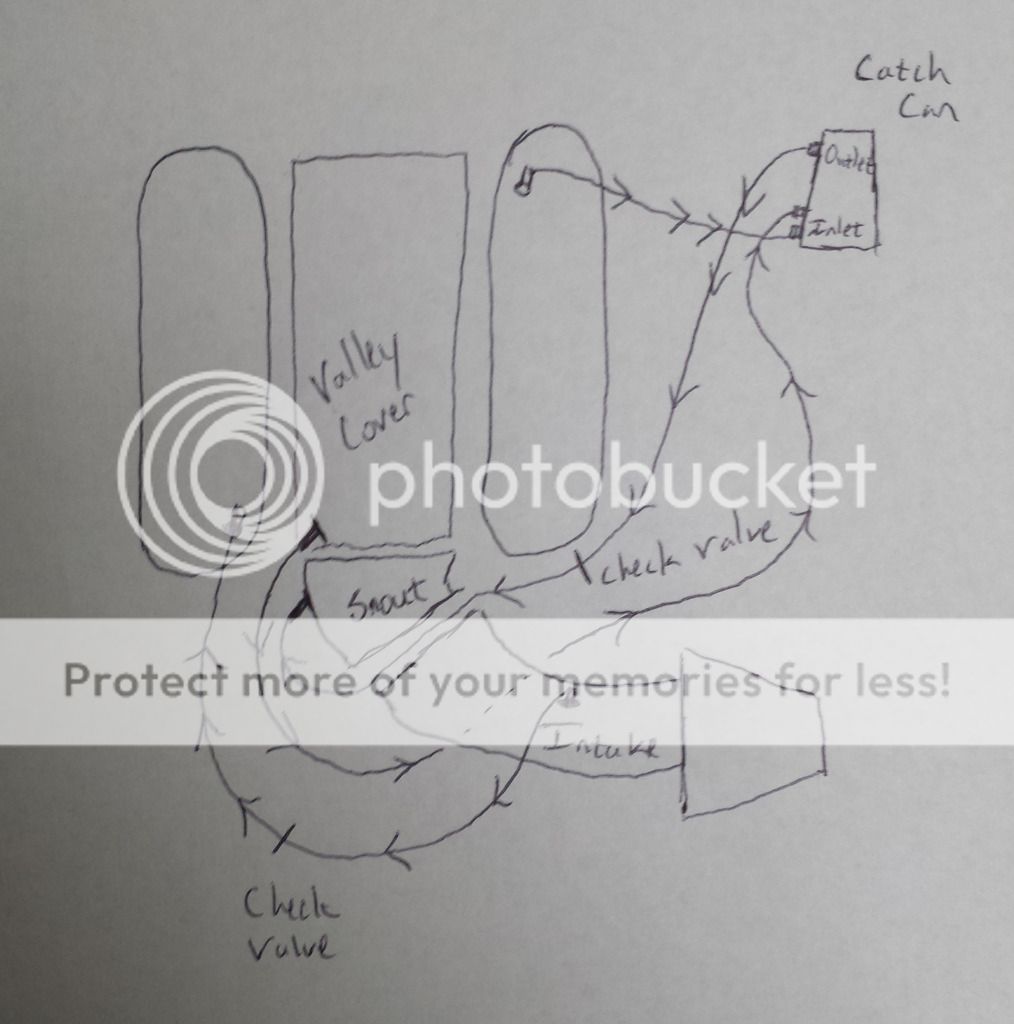I recently purchased the new BMR catch can and installed it. After ~20 miles of driving I thought I smelled something burning...looked under the car and see the exhaust and everything else from the oil pan back, is soaked in oil.
I have everything plumbed per their diagram below which I pulled straight from the BMR thread, including the check valve on the 'outlet' line and the hose between passenger side valve cover and intake. Can you guys take a look and see if you see any issues with this configuration? I have no idea if anyone else has bought this catch can and installed it yet, or not. I am sure BMR will say they have sold tons... My guess is that there is something pressurizing the crankcase, but I am not really familiar with our PCV system. Note: check valves are installed in the direction of air flow, with the arrows...

Input wanted! Nothing else changed besides catch can install and the oil geyser issue that could have contributed. Thanks.
I have everything plumbed per their diagram below which I pulled straight from the BMR thread, including the check valve on the 'outlet' line and the hose between passenger side valve cover and intake. Can you guys take a look and see if you see any issues with this configuration? I have no idea if anyone else has bought this catch can and installed it yet, or not. I am sure BMR will say they have sold tons... My guess is that there is something pressurizing the crankcase, but I am not really familiar with our PCV system. Note: check valves are installed in the direction of air flow, with the arrows...

Input wanted! Nothing else changed besides catch can install and the oil geyser issue that could have contributed. Thanks.




